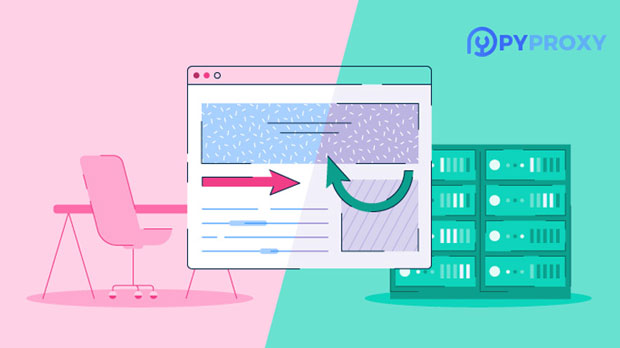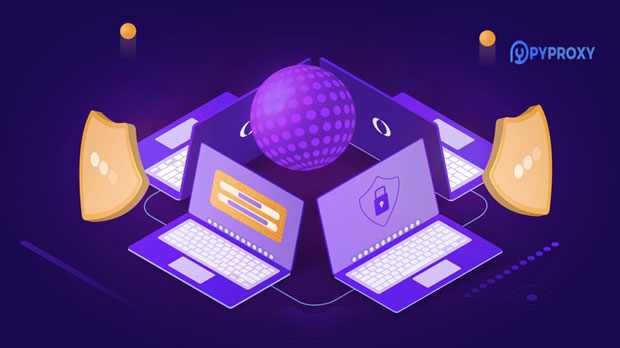In the world of social media scraping, where companies and marketers gather data from platforms to analyze trends, understand user behavior, or create targeted campaigns, the efficiency of the proxy service used is crucial. Two major players in the proxy market are Oxylabs residential proxy and PYPROXY. Both provide residential proxies, but which one offers more efficiency in terms of speed, reliability, and ease of use for social media scraping? This article dives deep into comparing these two services and analyzing which is the best choice for social media data extraction. Understanding the Importance of Residential Proxies for Social Media ScrapingWhen scraping data from social media platforms, it is essential to use residential proxies. These proxies route traffic through real devices, making them appear as legitimate users to the platforms, reducing the risk of detection and blocking. Residential proxies ensure that the scraping process is smooth, reliable, and undetected, making them a crucial tool for large-scale data extraction projects.Social media scraping is typically done to gather insights such as user engagement patterns, competitor analysis, trending hashtags, or sentiment analysis. The use of residential proxies ensures that these scraping tasks are done efficiently without encountering restrictions or bans, as social media platforms are often vigilant about bot-like behaviors and IP addresses that make repeated requests.Overview of Oxylabs Residential Proxy and PyProxyOxylabs Residential Proxy is a proxy service provider known for offering residential proxies that come with a wide range of features designed for ease of use and affordability. Its primary selling point is its ability to provide a large pool of residential IPs with high success rates, making it a popular choice for individuals and businesses looking for an accessible and budget-friendly solution.PyProxy, on the other hand, is recognized as a premium proxy provider. It offers a comprehensive suite of proxy services, including residential proxies with an emphasis on reliability, speed, and large-scale scraping. PyProxy is generally considered a higher-tier service compared to Oxylabs Residential Proxy, focusing on enterprise-level solutions with exceptional customer support and more robust features tailored to data-heavy projects.Key Features of Oxylabs Residential Proxy vs PyProxy1. Proxy Pool Size and CoverageOne of the most important factors when choosing a proxy service is the size and coverage of the proxy pool. A larger pool of residential IPs ensures a higher chance of success when scraping data without triggering IP bans or CAPTCHAs.- Oxylabs Residential Proxy provides access to a reasonably large pool of IPs, although it might not be as extensive as PyProxy. However, it does offer good regional coverage and supports multiple locations, which can be essential when scraping global social media data. - PyProxy excels in this area, offering one of the largest proxy pools in the industry. With millions of residential IPs across a wide range of countries, PyProxy gives users unparalleled flexibility in terms of location targeting and volume capacity, which is especially valuable for large-scale data scraping from social media platforms.2. Speed and ReliabilityFor social media scraping, speed is a critical factor. Slow proxies can cause delays in data collection, potentially leading to incomplete datasets or missed opportunities.- Oxylabs Residential Proxy provides reasonable speeds for smaller-scale scraping projects. However, the overall speed can sometimes fluctuate depending on the location and the number of simultaneous users accessing the proxy pool. This makes it less reliable for high-demand scraping tasks or when time-sensitive data needs to be collected. - PyProxy stands out in terms of speed and reliability. It uses advanced technologies such as session control, which ensures stable connections even under high traffic. This makes PyProxy the go-to option for businesses that need to scrape large volumes of social media data quickly and efficiently without experiencing timeouts or slowdowns.3. Ease of Use and IntegrationWhen choosing a proxy provider for social media scraping, ease of use and integration with popular scraping tools and platforms can make a significant difference.- Oxylabs Residential Proxy offers an intuitive dashboard with easy setup options for various scraping tools and applications. While it is suitable for beginners or small teams, some advanced features may require a bit of a learning curve to fully utilize. - PyProxy, being a premium provider, offers seamless integration with major scraping tools, along with an advanced API for custom setups. It also provides extensive documentation and a dedicated support team, making it a preferred choice for enterprises and professional scrapers.4. Customer SupportGood customer support is essential, especially when scraping social media data in large quantities. Proxies may encounter issues, and having quick access to support can help avoid downtime.- Oxylabs Residential Proxy offers support via email and ticketing systems. While the support team is responsive, there are occasional delays during peak hours. This is typical for budget-friendly services where customer service resources are limited. - PyProxy provides top-tier customer support, including 24/7 live chat and dedicated account managers for enterprise customers. With PyProxy, you can expect quick resolutions to issues and personalized attention, which is vital for complex or time-sensitive social media scraping projects.5. PricingPricing is often a decisive factor for businesses or individuals when choosing between proxy providers. - Oxylabs Residential Proxy is more affordable, making it ideal for smaller businesses or individuals who need a cost-effective solution for occasional scraping projects. However, its lower price point comes with some trade-offs in terms of speed, reliability, and proxy pool size. - PyProxy is more expensive but justifies the cost with superior performance, customer support, and scalability. For large enterprises or companies with high-volume scraping needs, the price is justified by the increased efficiency, speed, and reliability.Which Service is More Efficient for Social Media Scraping?When evaluating the efficiency of Oxylabs Residential Proxy versus PyProxy for social media scraping, several factors must be considered: proxy pool size, speed, reliability, ease of use, and customer support.For smaller-scale projects or individuals who need a more affordable solution, Oxylabs Residential Proxy may suffice. It provides good value for its cost, offering access to a large pool of residential proxies with decent speeds for less intensive scraping tasks. However, the service may not handle large-scale data extraction projects efficiently due to speed fluctuations and limited support for high-demand needs.For large-scale enterprises or businesses that require high-speed performance, reliability, and advanced features, PyProxy is the superior choice. It offers a robust proxy pool, faster speeds, better reliability under load, and excellent customer support. Additionally, PyProxy provides better integration with scraping tools, which is critical for large social media scraping campaigns that need to be executed efficiently and without interruptions.While both Oxylabs Residential Proxy and PyProxy offer reliable residential proxy services, PyProxy stands out as the more efficient option for large-scale social media scraping tasks. Its larger proxy pool, superior speed, and enterprise-grade customer support make it the preferred choice for professional and high-volume scraping needs. Oxylabs Residential Proxy, though cost-effective, is more suited for smaller-scale operations where affordability is the primary concern.Choosing the right proxy provider ultimately depends on your specific needs: whether you're working on a small-scale project or managing a large-scale enterprise scraping operation. Either way, both services offer valuable solutions, but PyProxy is the more efficient option when performance is key.
Sep 29, 2025



































































